Disclosure: Meeple Mountain received a free copy of this product in exchange for an honest, unbiased review. This review is not intended to be an endorsement.
There’s an undeniable pleasure that comes from casually strolling through the farmers market and browsing through the various offerings that are on display. Over here you have the peach stand selling some of the freshest, juiciest peaches you’ve ever laid your eyes on. Next to that is a stand selling jars of delicious, sticky, amber gold gathered from local beehives. Over there is a vendor purveying thick slabs of locally harvested halibut. And let’s not forget King of Pops (a personal favorite featured at my local farmers market) and their array of some of the most amazing popsicles you’ll ever enjoy.
A farmers market is the kind of magical place that, much like a used bookstore, you tell yourself you’re only going to spend a certain amount of money in, but you walk away having spent way more than you intended.
Now you can experience a day at the farmers market without having to leave your home.
Meet Downtown Farmers Market, one of the newest titles in Blue Orange Games’s lineup.

In Downtown Farmers Market, the players take on the roles of savvy shoppers prowling the stands at their local farmers market as they try to fulfill a shopping list with some very specific requirements.
During the game, players will be drafting Challenge tiles from a tile offering and then placing those tiles into their personal 4×4 display. Each player begins the game with a set of unique Challenges for each row and column in their display and each tile placed will be one step towards fulfilling one of them. For instance, if a player has a Challenge tile that asks for exactly five corn to be present in a specific column, that will influence which tiles they choose to place in that column. The better they are able to meet the various requirements, the more points they’ll score, and if they score the most, they’ll win the game.
Going Downtown
A newly setup game of Downtown Farmers Market will look something like this:
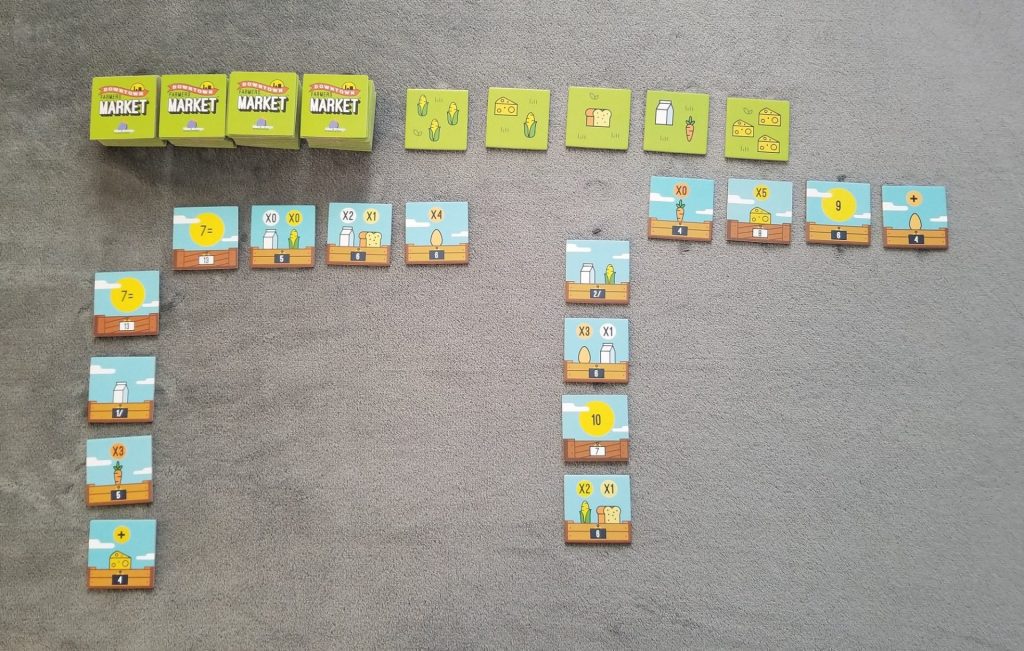
During setup, each player receives four randomly drawn, double-sided Challenge tiles for the tops of their columns. Next, they select which side of each tile to use as well as their positions in the columns. Then they will perform this process for each row. Next, the Food tiles are shuffled and placed in face down stacks close by. Five of these are drawn and placed face up into a row.
Once a starting player has been determined, they are given the First Player token and the game begins.
Market Savvy
The actual mechanics of drafting a tile from the lineup are pretty straightforward. And, as mentioned previously, once you’ve selected a tile, you must place it somewhere in your grid even if the tile isn’t very helpful. The tile can be placed anywhere within the grid as long as it doesn’t extend beyond the confines of the grid or cover up a previously placed tile.
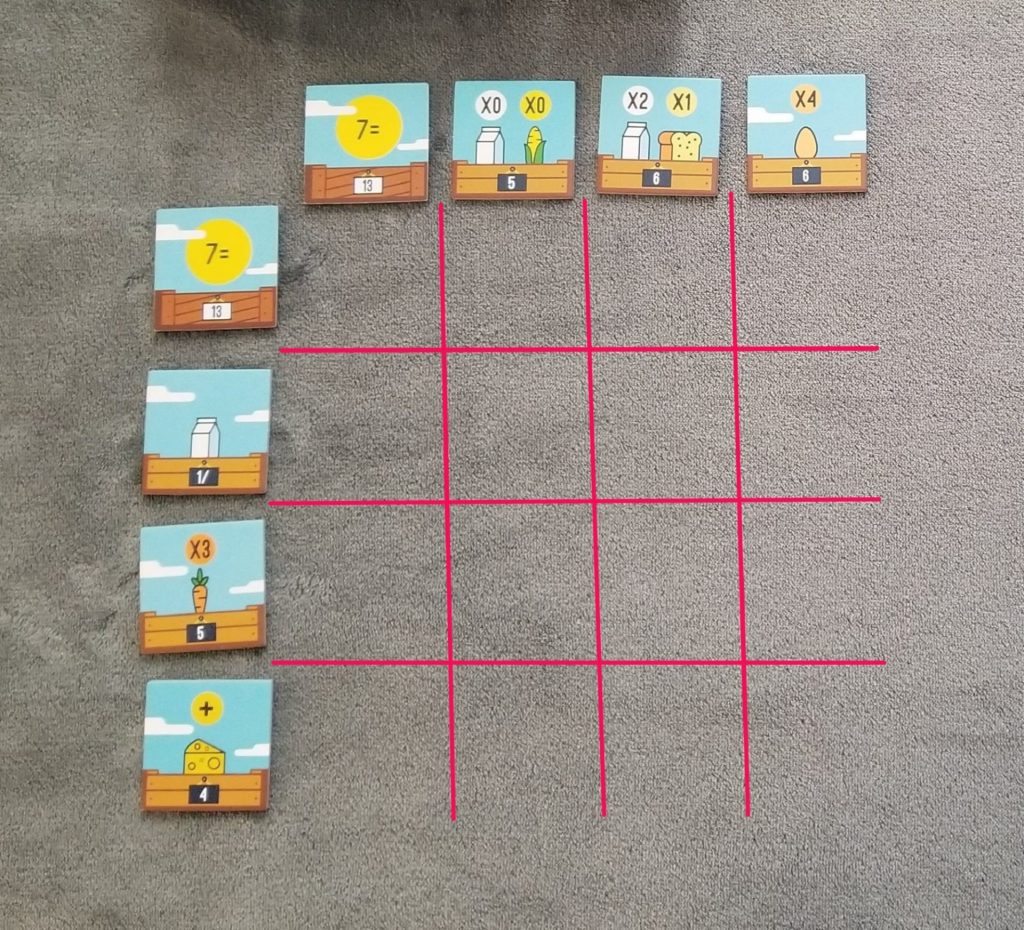
Where you place the tile will depend largely upon the scoring parameters you have set for yourself. If a column calls for exactly five carrots and the tile you’re holding would cause that column to go over that limit, you’ll most likely want to place that carrot somewhere else. Understanding this can be especially useful in a two- or three-player game because, in those games, not only does the first player draft a tile for themselves, but they also remove one of the remaining tiles from the game entirely (both players in a two-player game). In those games, you’re not only drafting for your own success, but you’re actively trying to set up your opponents for failure.
Cashing In
After every player has placed their final tile, scoring is performed. Each row and column are evaluated to determine if the criteria shown on the Challenge tile has been met. Challenge tiles that were not met can be removed (this is not mandatory, but I’ve found that it helps with scoring). In all, there are seven different types of Challenges:
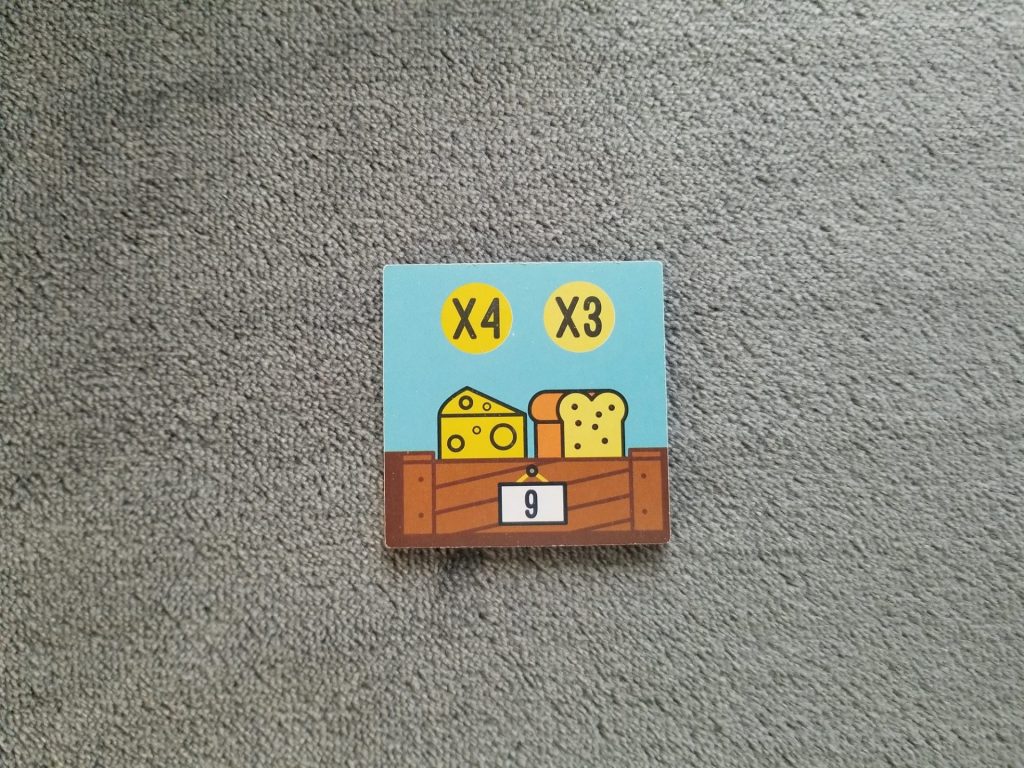 1. Each ingredient in the image must appear in the row/column the exact number of times—no more, no less—regardless of which other ingredients are also in the row/column.
1. Each ingredient in the image must appear in the row/column the exact number of times—no more, no less—regardless of which other ingredients are also in the row/column.
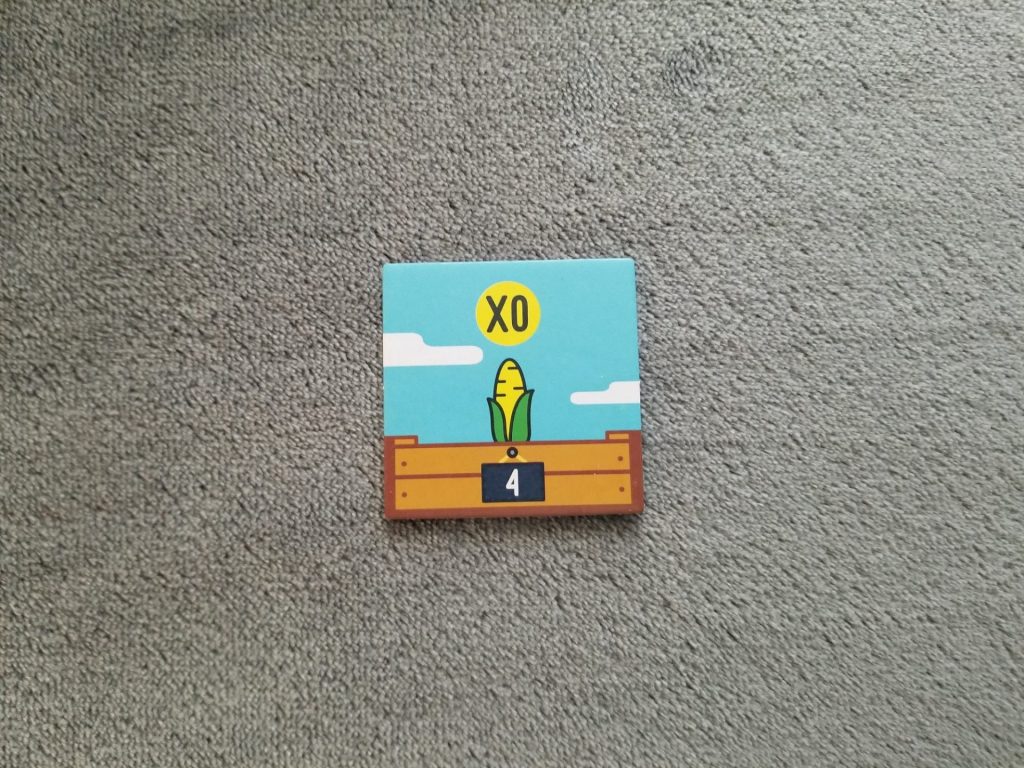 2. Each ingredient in the image must appear zero times in the row/column.
2. Each ingredient in the image must appear zero times in the row/column.
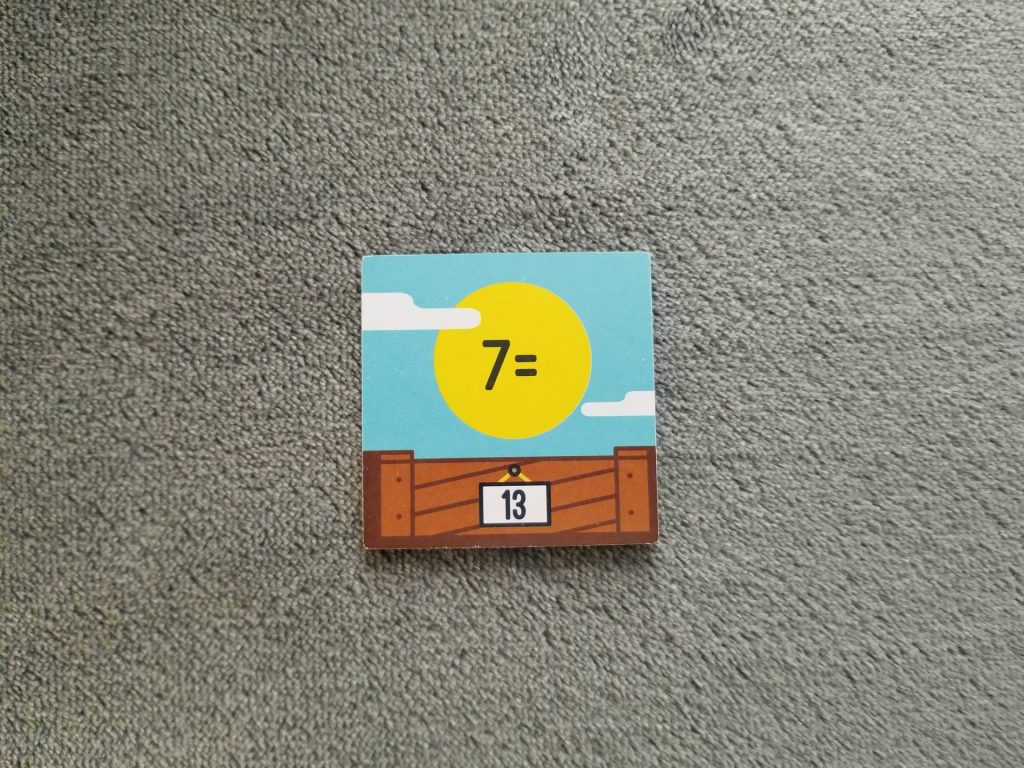 3. The ingredient of your choice must appear the exact number of times in the row/column as depicted on the tile—regardless of which other ingredients are also in the row/column.
3. The ingredient of your choice must appear the exact number of times in the row/column as depicted on the tile—regardless of which other ingredients are also in the row/column.
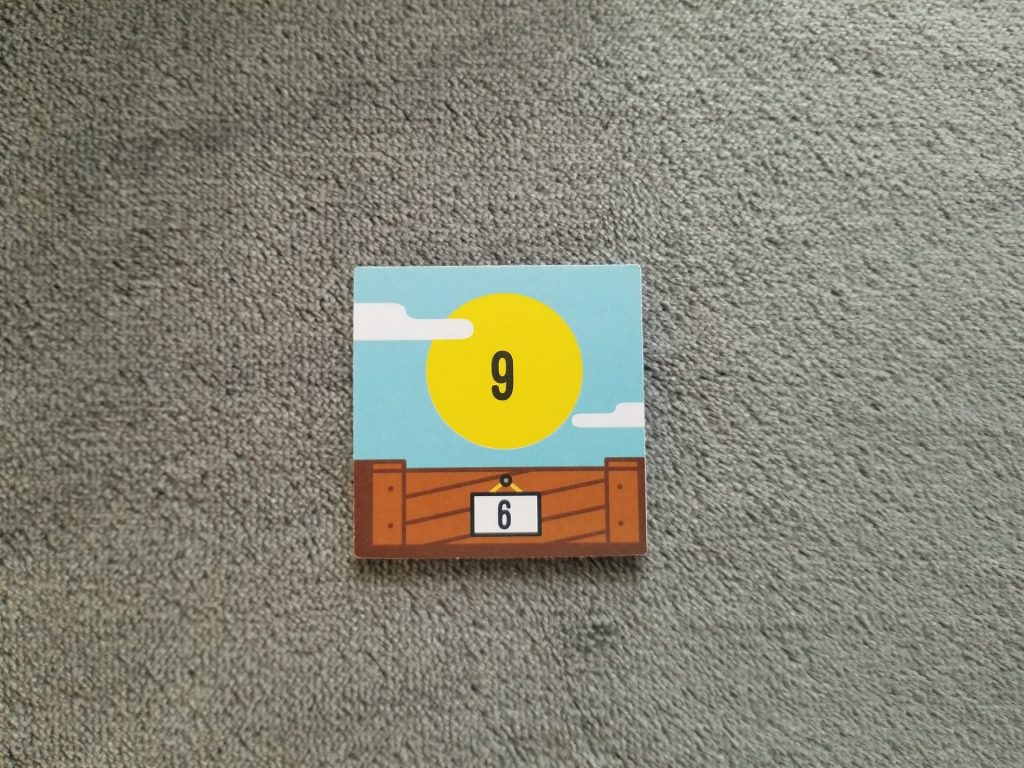 4. The total number of ingredients in the row/column must equal the number depicted on the tile. It does not matter what the ingredients are.
4. The total number of ingredients in the row/column must equal the number depicted on the tile. It does not matter what the ingredients are.
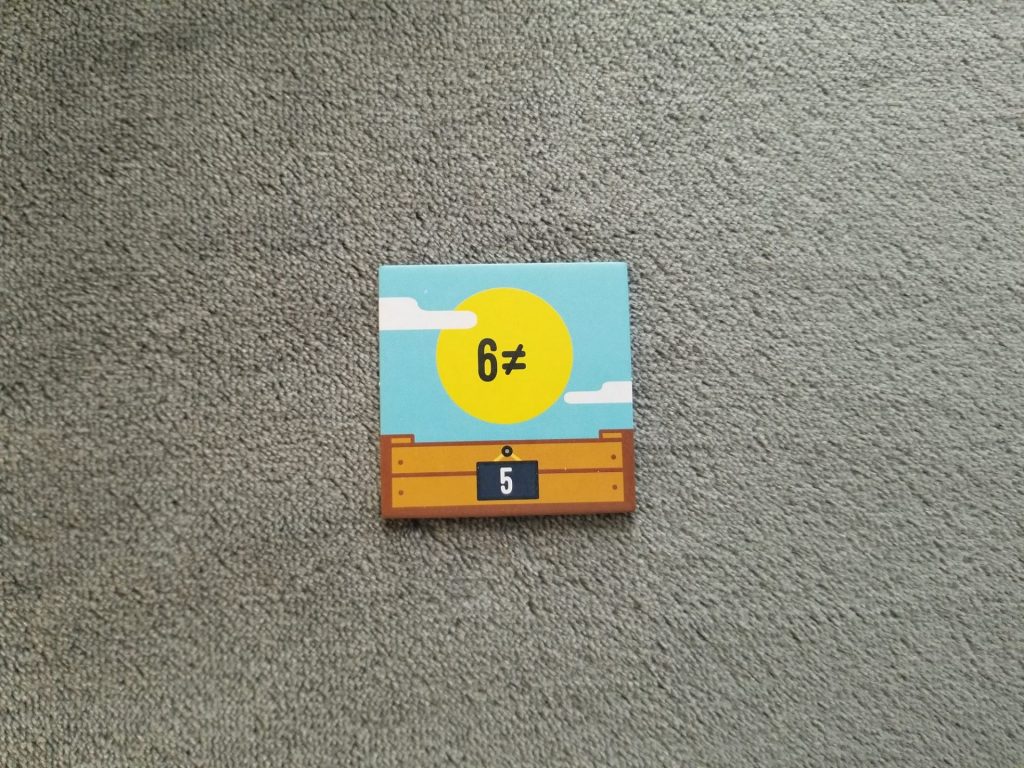 5. Each of the six different types of ingredients must appear at least once in the row/column.
5. Each of the six different types of ingredients must appear at least once in the row/column.
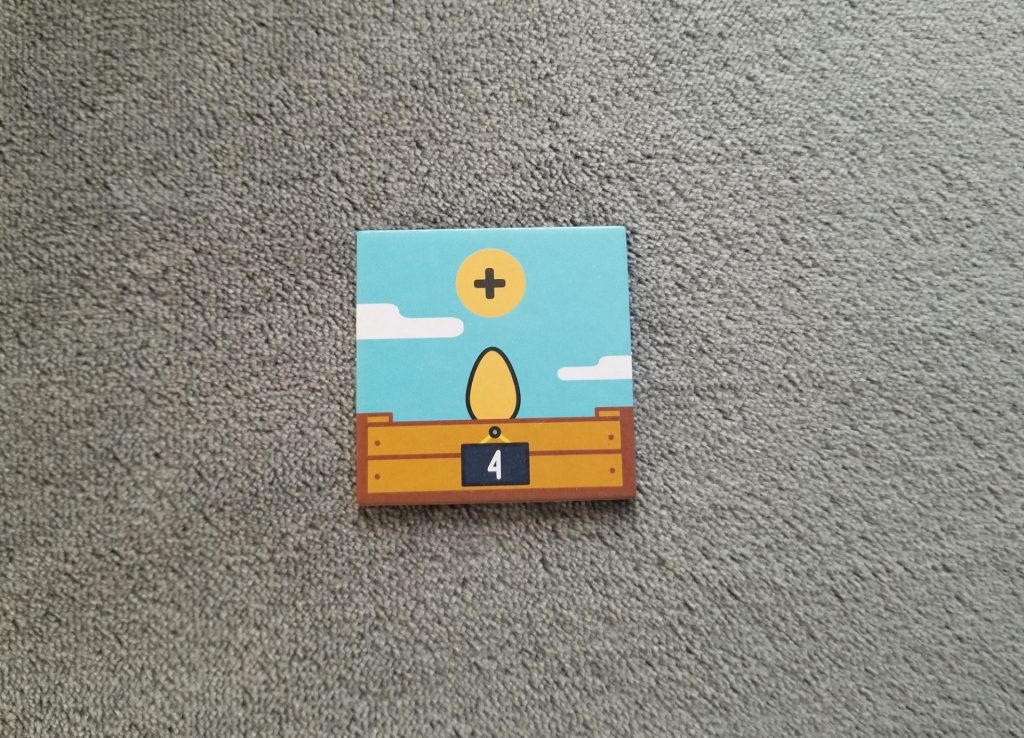 6. The depicted ingredient must appear in the row/column more frequently than any other ingredient type.
6. The depicted ingredient must appear in the row/column more frequently than any other ingredient type.
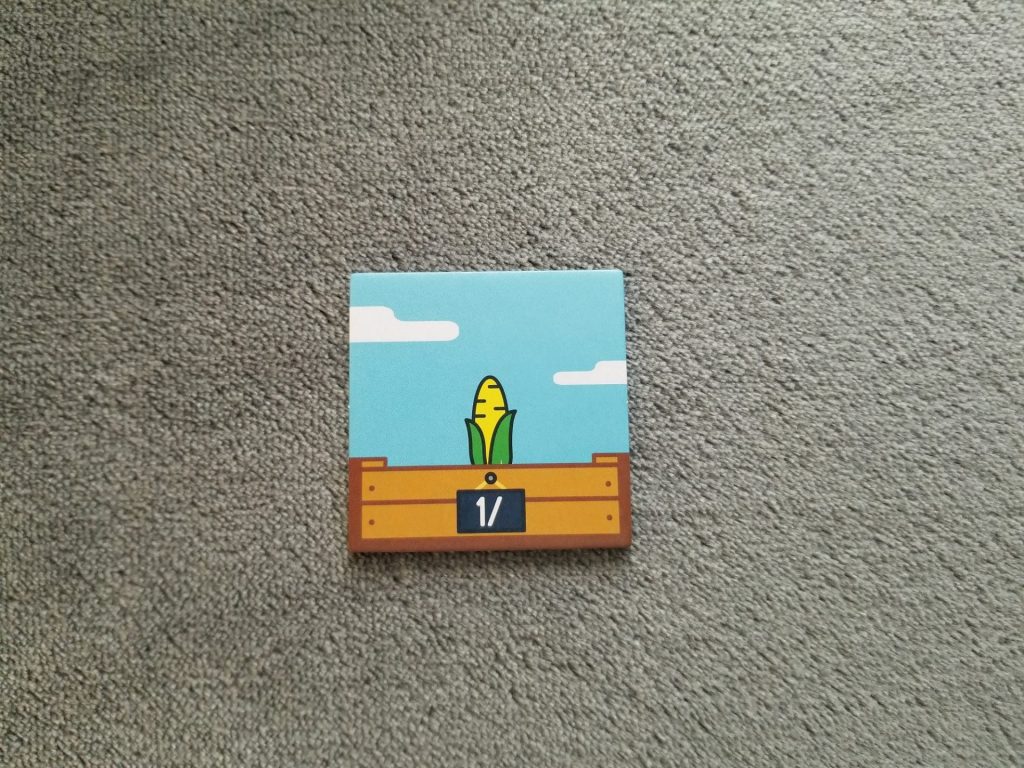 7. Earn the depicted number of victory points for every instance of the depicted ingredient(s) in the row/column.
7. Earn the depicted number of victory points for every instance of the depicted ingredient(s) in the row/column.
Add the scores derived from each successfully completed row and column to arrive at your final score and, if you have the highest total, you win.
There is a variant included (the Young Shopper variant) that is designed to make the game easier to play with younger children or other people that struggle with math. This variant doesn’t use Challenge tiles. Instead the players build their 4×4 grid as usual and then score points based on which ingredient is most plentiful in each row and column, one point per instance of that item. I have not personally played with this variant, so cannot comment on it with any authority. Still, it’s nice to know that it’s there.
Thoughts
I really enjoy Downtown Farmers Market. Packaged inside of a well-fitted, magnetically sealed box, this little game hits all of the right notes for me. It’s a quick, light, yet challenging filler that doesn’t overstay its welcome. The game’s theme coupled with the thoroughly uncomplicated, yet attractive artwork (the artist, sadly, is not credited anywhere in the rules, on BoardGameGeek, or even on Blue Orange Games’s website) keep things light and uplifting. It’s been a very enjoyable experience every time I’ve had the opportunity to play it.
For the most part.
Downtown Farmers Market is a different kind of beast at the two player count. At two players there’s no getting around the very targeted destruction that’s going on. Unless you’re terrible at the game, you’re going to find yourself repeatedly poring over your opponent’s grid trying to determine which tile will hurt them the most by removing it from the lineup. And you’ll find this being done back at you in kind. There’s a level of cutthroatedness at two players that just doesn’t exist at higher player counts. As such, I do not recommend playing this with a significant other, at least not if you value that relationship.
My only other beef has to do with the components. I hate shuffling tiles. Having to shuffle tiles and then arranging them in face down stacks is annoying. In my opinion, if a game is asking you to shuffle tiles, it should just provide you a drawstring bag to draw them from. This is why I always carry a drawstring bag with me in my boardgaming kit. So be forewarned: Downtown Farmers Market has a lot of tiles and the shuffling and stacking is going to add unnecessary time to your setup.
Aside from that, though, I have nothing but praise for Downtown Farmers Market. I have thoroughly enjoyed myself every time I have gotten it to the table. Unless you’ve had a traumatic experience at the farmers market (like the King of Pops guy not showing up), I have no doubt you’ll enjoy it, too.












Add Comment